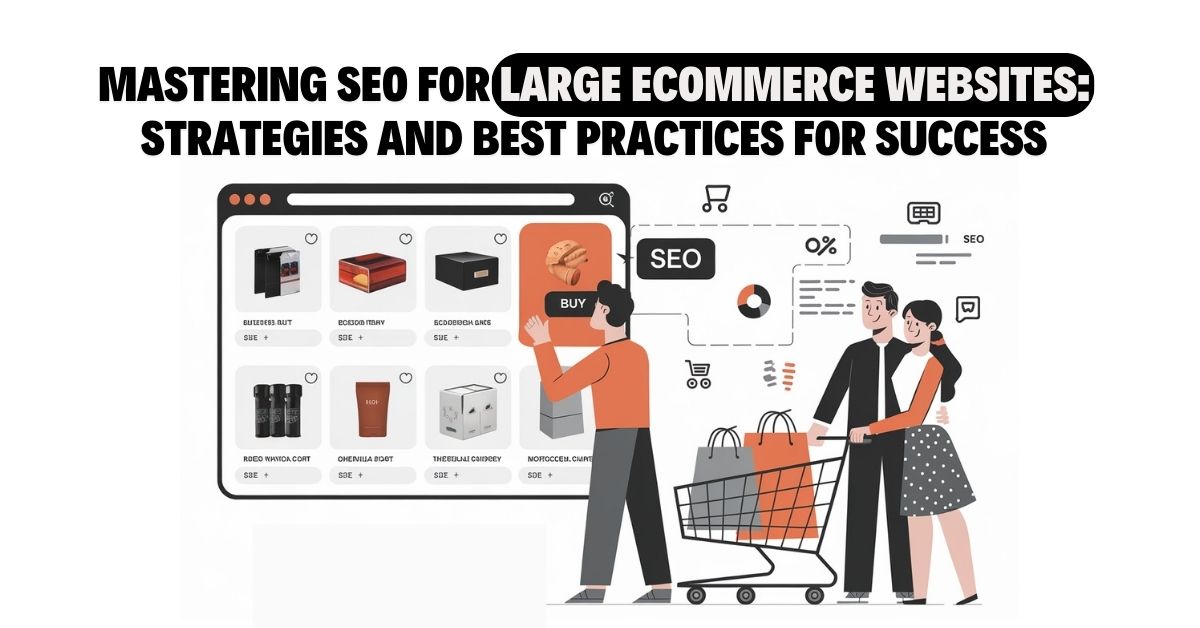Mastering SEO for Large eCommerce Websites: A Comprehensive Guide
In the ever-evolving digital landscape, mastering SEO for large eCommerce websites is not just a luxury but a necessity. With ever-increasing competition, having a robust SEO strategy is crucial for driving organic traffic, improving search rankings, and ultimately boosting sales. Large eCommerce platforms face unique challenges that require tailored strategies to ensure they capture significant market share. This comprehensive guide will delve into the intricacies of SEO for large eCommerce websites, exploring strategies, tips, and best practices designed to overcome the many challenges inherent in managing substantial online retail operations.
Understanding the SEO Landscape for Large eCommerce Websites
SEO for eCommerce websites differs significantly from general SEO practices due to the sheer volume of products, dynamic content, and complex site architectures. While traditional SEO focuses on optimizing content and keywords for fewer pages, eCommerce SEO deals with thousands of product pages that frequently change and update.
The eCommerce industry is booming, with hundreds of millions of potential customers searching online for products every day. As such, businesses must stay informed on key statistics and trends if they are to capitalize on this ever-growing market. Keyword difficulty varies immensely across different niches, making it crucial for eCommerce professionals to identify high-value keywords with reasonable search volume yet manageable competition. Understanding these nuances is critical for developing effective SEO strategies tailored specifically for large eCommerce platforms.
Key SEO Challenges Faced by Large eCommerce Websites
Large eCommerce websites are not without their challenges. One of the primary issues is the management of extensive product catalogs, which often lead to duplicate content issues. With endless variations of the same products, ensuring unique and engaging content becomes pivotal to avoid being penalized by search engines.
Complicated URL structures and site architecture further complicate matters, potentially hampering site crawling and indexing by search engines. The larger the site, the more challenging it becomes to manage the crawl budget effectively and ensure all pages are indexed in a timely manner.
Crafting an Effective URL and Site Architecture
A well-structured URL can significantly enhance SEO efforts by making pages easier to understand for both users and search engines. Implementing breadcrumb navigation on large eCommerce websites aids in improving navigation, helping users to find their way through complex product hierarchies easily.
Creating a user-friendly site architecture is essential for seamless navigation and effective SEO. Employing clear category, sub-category, and product page hierarchies not only assists in better indexing by search engines but also enhances the user experience by simplifying how visitors find what they’re looking for.
Optimizing Product Pages for SEO
Product pages are the lifeblood of any eCommerce business. Optimizing these pages for search engines is critical in attracting potential customers. Unique product descriptions are a must to differentiate from competitors and avoid duplicate content issues. Rich snippets, image alt texts, and schema markup aid in enhancing search visibility and click-through rates.
Carefully crafted meta tags play an essential role in managing large product catalogs. Ensuring each product page has well-written meta titles and descriptions that include targeted keywords can significantly improve search performance.
Managing Duplicate Content
As mentioned, duplicate content can be a recurring headache for large eCommerce sites. Implementing canonical tags allows webmasters to inform search engines about the preferred versions of duplicate pages, helping to consolidate link equity and improve rankings.
When dealing with removed products or seasonal items, using 301 redirects ensures visitors and search engines are directed to relevant new pages, maintaining the site’s authority and user experience. Additionally, using noindex tags, intelligent pagination practices, and managing URL parameters effectively can prevent unnecessary indexation and duplicate content issues.
Enhancing Site Speed and Mobile Optimization
Site speed is a critical factor affecting user experience and search rankings. For large eCommerce websites, optimizing site performance is imperative as slow-loading pages can lead to high bounce rates and diminished SEO returns. Utilizing tools to measure load times and employing techniques like image compression, browser caching, and code minification can significantly improve site speed.
Moreover, with the advent of mobile-first indexing by Google, ensuring that eCommerce websites are responsive and mobile-friendly is no longer optional. Implementing a responsive design provides a seamless shopping experience on any device, enhancing user satisfaction and boosting SEO metrics.
Leveraging Internal Linking and Backlink Strategies
A strong internal linking structure not only improves navigation but also helps search engines understand the relationship between different pages on your website. This tactic aids in distributing link equity across various product pages and categories, enhancing overall SEO performance.
Earning high-quality backlinks is another pillar of an effective eCommerce SEO strategy. Developing compelling, shareable content and engaging in collaborations with relevant industry influencers can yield valuable backlinks. Content marketing, such as informative blogs, guides, and videos, plays a critical role in earning these coveted links and driving organic traffic.
Implementing Advanced Analytics and Monitoring
In the fast-paced world of eCommerce, continuous monitoring and adjustment of SEO strategies are imperative. Tracking key metrics such as organic traffic, conversion rates, bounce rates, and average session duration provides insights into your SEO performance. Utilizing tools like Google Analytics and Google Search Console aids in collecting valuable data and gauging the effectiveness of implemented strategies.
Employing these insights to refine and adjust your SEO strategy ensures continuous improvement and relevance in an ever-changing market.
Conclusion
Mastering SEO for large eCommerce websites involves understanding the unique challenges they face and employing tailored strategies that align with industry trends and best practices. From managing product pages and optimizing site speed to leveraging analytics for performance tracking, each component plays a crucial role in achieving SEO success.
By implementing the strategies outlined in this guide, large eCommerce platforms can enhance their search visibility, attract more organic traffic, and stay competitive in an increasingly saturated marketplace.
Call to Action:
For more insights into mastering SEO for large eCommerce websites and to stay updated with the latest SEO trends, subscribe to our newsletter. If you’re looking for personalized assistance or a consultation, feel free to contact us!
Sharing is caring, so if you found this post helpful, please share it with others who might benefit. Your support is greatly appreciated as we continue to provide valuable insights into the world of eCommerce SEO.







